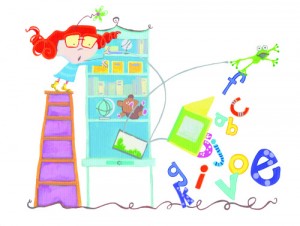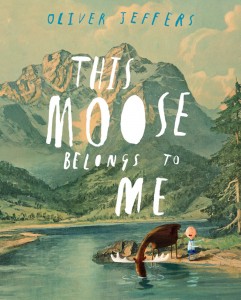February 4, 2013
A Question of Identity by Susan Hill
 I can’t believe that A Question of Identity is only my third Simon Serrailler mystery. It feels like my connection to these books goes deeper, like these are characters I’ve known for a long long time. Which is a testament to the depth of the books in this series, though I wonder if Susan Hill has finally crossed a line, if the Simon Serrailler novels are now incapable of standing alone. I can imagine that a reader who picks up this one looking for a good whodunnit might be confused by all the attention on Simon Serrailler’s sister, Dr. Cat Deerbon, her work in a hospice, trouble amongst her adolescent children. Would they know what to make of Simon’s stepmother who is hiding some kind of terrible secret about her marriage? And what of Simon’s relationship with Rachel, whose husband is in the final stages of Parkinson’s Disease? Who dun what anyway, that isn’t contained in some rich and wonderful back-story?
I can’t believe that A Question of Identity is only my third Simon Serrailler mystery. It feels like my connection to these books goes deeper, like these are characters I’ve known for a long long time. Which is a testament to the depth of the books in this series, though I wonder if Susan Hill has finally crossed a line, if the Simon Serrailler novels are now incapable of standing alone. I can imagine that a reader who picks up this one looking for a good whodunnit might be confused by all the attention on Simon Serrailler’s sister, Dr. Cat Deerbon, her work in a hospice, trouble amongst her adolescent children. Would they know what to make of Simon’s stepmother who is hiding some kind of terrible secret about her marriage? And what of Simon’s relationship with Rachel, whose husband is in the final stages of Parkinson’s Disease? Who dun what anyway, that isn’t contained in some rich and wonderful back-story?
For those of us well-versed in the back-story, A Question of Identity is a kind of homecoming. Susan Hill is a wonderful writer whose crime novels are as rich as any literary novel in terms of character, writing, and depth. And what I most appreciate about them are how much they are of this world. In A Question of Identity, a group of readers get together to form a book club to support their local independent bookshop, which is struggling in these tough economic times…
And yes, I admire Hill’s novels’ unabashed bookishness too. Right before a character is killed off, Hill has her compiling a list of books for a lending library she’s thinking of starting at the seniors’ complex she’s just moved to. “She was well into her stride, remembering books she’d loved, wondering if this or that novel was out of print, adding ‘Miss Read’ hastiliy, then ‘Nancy Mitford’ and “Denis Lehane’–one of her own favourites, but possibly a bit too raw for some…. She was enjoying herself, and had just jotted down Daphne du Maurier when she heard a sound…”
So yes, onto the murders. At a (poorly constructed–typical) newly-built seniors’ housing complex in Lafferton, two women have been killed in the dead of night in a bizarre ritual, with no signs of forced entry. Simon Serrailler and his team find a break when they link the crimes to a few committed in Yorkshire years before, except the accused in those cases was shockingly acquitted and fixed with a new identity for his own protection afterwards. Which means that he is now untraceable, and authorities are refusing to disclose any information to police in Lafferton. Simon is faced with having to track down a suspect whose existence has been wiped off the face of the earth.
Somewhat disappointingly, I guessed the murderer quite early on in the book, which says something because I’m normally quite a rubbish sleuth. There just weren’t enough other suspects, and Hill has the suspect finally caught in a sting that felt somewhat artificial. So perhaps as a crime novel this one comes up short, but then I still read it with utter pleasure, and I’m not sure that a good crime plot was ever what I came to these novels looking for anyway.
February 3, 2013
How (at least I am hoping…) having a baby is just like getting a tattoo.
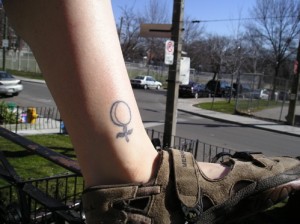 Last summer, there was this two week period during which I was completely occupied by the question of whether or not have have another child. Mostly because we were coming down the wire of “now or never”. It was something we’d been meaning to get around to, but had had good reasons to put off for over a year by that point. We had been having a very good time with our one child, with a life arranged very much the way we liked it. It was easy, most of the time. We were comfortable. I suddenly understood those people who decided not to have children because of how their lifestyle would be affected. I had never thought about it first time around, because I wanted a baby, no question, but now I understood the stakes of having a baby, how much upheaval it would really mean. I also knew that my mothering self had limits I hadn’t known about when a baby was just something I dreamed about.
Last summer, there was this two week period during which I was completely occupied by the question of whether or not have have another child. Mostly because we were coming down the wire of “now or never”. It was something we’d been meaning to get around to, but had had good reasons to put off for over a year by that point. We had been having a very good time with our one child, with a life arranged very much the way we liked it. It was easy, most of the time. We were comfortable. I suddenly understood those people who decided not to have children because of how their lifestyle would be affected. I had never thought about it first time around, because I wanted a baby, no question, but now I understood the stakes of having a baby, how much upheaval it would really mean. I also knew that my mothering self had limits I hadn’t known about when a baby was just something I dreamed about.
Anyway, because I am me, I spent that two week period of complete occupation talking about my quandary with everyone I came into contact with. Friends with newborns, pregnant friends, new friends, old friends, my book club, total strangers–I cringe now to think about it, but I kept putting the word out into the world hoping to get back some kind of answer, a confirmation.
“The problem,” I remember telling one friend, “is that another baby would push our limits. I mean, financially, and in terms of space, and how much I am willing or able to give of myself.” In practical terms, having one child only would make the most sense for us.
“So, why don’t you do that?” she said.
But I knew that I couldn’t. It wasn’t that simple for me. And not because of anything that society says, or pressure from outside camps, or even because of how much Harriet wanted to have a sibling. Just as I’d always known that I wanted to have a child, I also knew that I would want another. It’s not a logical thing; it’s more compulsive, actually. It doesn’t make any sense. A smart woman would know her limits, and heed them, but I know I would not be satisfied. It wasn’t a question of “choice” (and really, not much is, reproductive-wise). If I made the choice not to have another baby, I’d spent the rest of my fertile years longing for one. Happy in my “lifestyle”, well-rested, but it wouldn’t be enough. Perhaps if the decision had been made for me, it would have been different, but it could not be a decision I’d be content to make for myself. (And don’t think I don’t know how fortunate I am to be in this situation at all, how much more choice I have than so many other women.)
A problem that many women have, I think, is too much empathy. We meet one another and assume that here is a like-creature.We feel secure enough in that to make judgements. We assume that what we feel is usually the norm, in what is general. (Or maybe that’s just me…) I have always wanted children, and I really cannot imagine what it would be to feel otherwise. And so when I hear about a woman who feels this way, I assume that there has been some kind of misunderstanding, hers or mine. Or I’ll equate her feelings with my own fears or uneasiness before getting pregnant myself, feelings that were so easily brushed aside, completely dismissing the specificity of her experience. Also, that same woman will hear me talking my non-choice/compulsion to have another baby, and write me off as a complete idiot.
Or I’ll see a headline like “Opting Out of Parenthood, With Finances in Mind” and it will raise my hackles–kids don’t have to be expensive. But then when I read the article carefully, I encounter the line, “Some people have a profound emotional desire to have children. But I don’t. Young as we are, it would take a pretty big financial, practical and emotional shift for that to change.” And clearly, this writer and I are operating from beginning points that are so far apart. What makes sense of the matter for me isn’t applicable for her, and vice versa. As with most human communication, much of the time none of us really have any idea what others are talking about ever.
Here’s what I’m hoping for though: I am hoping for is that for me having another baby turns out to be a lot like getting a tattoo. I got my first tattoo when I was 20, and immediately started planning another. And it concerned me, that I might never want to stop and would eventually turn into Lydia the tattooed lady. But when I got my second tattoo, when I was 24, right away, I knew I was done. It was enough.
I just hope in terms of babies that I’ll continue to know my self so well, and most of all that my “self” will continue to make demands on my body and my life that are fairly unridiculous, relatively speaking.
January 30, 2013
The House on Sugarbush Road by Méira Cook
 There is no expressway into the Johannesburg of Méira Cook’s novel The House on Sugarbush Road. Instead, the roads are twisting and clogged with traffic, detritus, pedestrians on the roadside calling out in a language you don’t understand. This is a novel that is disorienting to encounter, hard to get one’s bearings in; the reader travels blindly along these foreign streets, trusting in the story and its teller. And as the story progresses, the trust builds. While The House on Sugarbush Road is Méira Cook’s first novel, she is widely published (and lauded) as a poet, she worked as a journalist in her native South Africa, and her prose gorgeously reflects the former while her novel’s approach shows the latter. The effect is brutal, surprising, and provokes an incredibly visceral reaction.
There is no expressway into the Johannesburg of Méira Cook’s novel The House on Sugarbush Road. Instead, the roads are twisting and clogged with traffic, detritus, pedestrians on the roadside calling out in a language you don’t understand. This is a novel that is disorienting to encounter, hard to get one’s bearings in; the reader travels blindly along these foreign streets, trusting in the story and its teller. And as the story progresses, the trust builds. While The House on Sugarbush Road is Méira Cook’s first novel, she is widely published (and lauded) as a poet, she worked as a journalist in her native South Africa, and her prose gorgeously reflects the former while her novel’s approach shows the latter. The effect is brutal, surprising, and provokes an incredibly visceral reaction.
This novel was not what I was expecting. Perhaps it’s the sweetness of “sugarbush” but I was all set for the Africa of Alexander McCall Smith. And a wildly unpopular opinion, which I continue to hold, is that his Precious Ramotswe books are terrible. This was also set to be another book about the complicated relationship between a Black maid and the family she’s been loyal to for years and years, but my goodness, you don’t know from complicated. Beauty Mapule, like every other character in this book, is as imperfect as she is true. This is Johannesburg in 1994, just post-Apartheid, but this also means the flip-side of revolution–that the whole world has gone to pieces.
This brokenness and devastation is reflected in the house on Sugarbush Road where Beauty has lived and worked for 40 years in the deaths by car accident of Ilse and Meneer du Plessis, her employers, which occur not long before the story begins. Left behind is the elderly grandmother Ouma who is as much as a relic of another time as the house itself is, and Benjamin du Plessis, the son, who has returned from abroad because he doesn’t know what else to do with what his parents have left behind.
And Beauty Mapule, she hates him. She makes a point of of serving him the most paltry or gristly food portions, steals his pocket change, does whatever she can to make his existence as uncomfortable as possible. She glories in her power here, though she cannot articulate exactly her motivations. She thinks Benjamin is oblivious, but he isn’t. He just doesn’t know what to do about it, this woman who had loved him as a child alongside her own child, and who now makes clear her distaste and scorn.
It is easy to assume that the loss of Beauty’s own child, however, has everything to do with her behaviour. Her daughter Givvie, christened Given, who was taken in an episode of violence that was shockingly common at the time. Her son Lucky certainly fared better in his life, but the life that he has made for himself has little room for a mother who is a domestic servant. He wants nothing to do with his eldest son either, the product of an earlier relationship, and so Beauty has been left responsible for her grandson as well, who has turned out to be a complete disappointment.
Beauty’s stepdaughter, who has found being five months pregnant does nothing to deter the advances of the men who continually become besotted with her at first sight, finds work with Ouma’s daughter, Magda, whose previous maid had disappeared along with most of Magda’s worldly goods not long before. The father of her child is a shady but charming businessman with shades of the devil himself who becomes embroiled in the lives of every character in the novel eventually, the one element that connects in a place where so much has fallen apart.
The House on Sugarbush Road is scattered with phrases in a cacophony of languages, and there is not a glossary to be found. And I love that, that we’re expected to find our own way through this wild book, that Cook doesn’t provide us a guided tour, an opportunity for gawking, for spectacle. We have no choice but to be utterly absorbed in the novel, an experience which becomes devastating toward the novel’s conclusion, which is brutal, inexplicable, the opposite of everything we’re trained to expect from a story.
Except the very best stories, of course, which defy expectations. And so it goes with this one.
January 30, 2013
On yarn, yarns and Extra Yarn
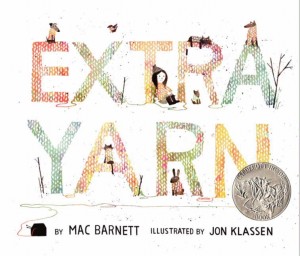 I’ve been knitting a baby blanket this last while, its colour yellow as selected by Harriet for whom yellowness is a sacred thing. And perhaps it was my current knitting project that got me thinking about the CanLit/Knitting Connection recently, about knitting in books and knitting about books. Then I thought about it more yesterday when we took out Extra Yarn by Mac Barnett and Jon Klassen from the library. What a spectacular book, about a little girl whose magical yarn stash never seems to run-0ut (and I know a lot of knitters, actually, with a similar affliction). I don’t know that Jon Klassen has ever gone wrong, and we loved this story with its splashes of colour, amusing prose, and sinister archduke (plus, SPOILERS, happy ending). Of course, you probably know all about this book already, especially since it was selected as a Caldecott Honour Book on Monday. Which was a particularly good day for Jon Klassen who also won the Caldecott Medal proper for the wonderful This is Not My Hat. I imagine this exciting news has changed Klassen’s whole life a little bit, but it’s changed mine too, because now I get to say that my website features an interview with a Caldecott winner.
I’ve been knitting a baby blanket this last while, its colour yellow as selected by Harriet for whom yellowness is a sacred thing. And perhaps it was my current knitting project that got me thinking about the CanLit/Knitting Connection recently, about knitting in books and knitting about books. Then I thought about it more yesterday when we took out Extra Yarn by Mac Barnett and Jon Klassen from the library. What a spectacular book, about a little girl whose magical yarn stash never seems to run-0ut (and I know a lot of knitters, actually, with a similar affliction). I don’t know that Jon Klassen has ever gone wrong, and we loved this story with its splashes of colour, amusing prose, and sinister archduke (plus, SPOILERS, happy ending). Of course, you probably know all about this book already, especially since it was selected as a Caldecott Honour Book on Monday. Which was a particularly good day for Jon Klassen who also won the Caldecott Medal proper for the wonderful This is Not My Hat. I imagine this exciting news has changed Klassen’s whole life a little bit, but it’s changed mine too, because now I get to say that my website features an interview with a Caldecott winner.
January 29, 2013
Welcome to our new arrival!
 Life has changed forever in our home since the delivery of our newest household member on Saturday morning. Labour was a breeze, performed by two strong men who apparently carry appliances up rickety staircases and install them in attics all the time. And thereafter we fell upon gazing at it, unable to get over the beauty, the shine, the rocket-ship-ness. It plays music when its cycle is completed. Our previous washing machine was so old that when we asked our landlord to replace it, she reminisced that she’d used it to wash her kids’ diapers, and her kids are now in high school. Our old washer was Shirley Jackson eccentric, and it had a dial, but the label had worn off so we could never tell what the setting was, and there only seemed to be one setting anyway which mainly involved the washing machine dancing across the floor, and leaving the clothes inside not only not clean, but usually ripped. And don’t get me wrong–it was better than nothing. And certainly better, being close at hand, than the washing machines at the laundromat on Harbord Street which I’d frequented before we moved here, having to queue, and then remove other people’s manky underpants before using the machine for myself. But now this is a brand new washing machine, and it’s never known any manky pants but my own. When the clothes come out, they’re so clean you can feel it, and they’re nearly dry from the spin. And only a few months down the line, when I’m up to my ears in cloth diapers, will my love for this machine fully blossom. I’m almost excited about it. Almost.
Life has changed forever in our home since the delivery of our newest household member on Saturday morning. Labour was a breeze, performed by two strong men who apparently carry appliances up rickety staircases and install them in attics all the time. And thereafter we fell upon gazing at it, unable to get over the beauty, the shine, the rocket-ship-ness. It plays music when its cycle is completed. Our previous washing machine was so old that when we asked our landlord to replace it, she reminisced that she’d used it to wash her kids’ diapers, and her kids are now in high school. Our old washer was Shirley Jackson eccentric, and it had a dial, but the label had worn off so we could never tell what the setting was, and there only seemed to be one setting anyway which mainly involved the washing machine dancing across the floor, and leaving the clothes inside not only not clean, but usually ripped. And don’t get me wrong–it was better than nothing. And certainly better, being close at hand, than the washing machines at the laundromat on Harbord Street which I’d frequented before we moved here, having to queue, and then remove other people’s manky underpants before using the machine for myself. But now this is a brand new washing machine, and it’s never known any manky pants but my own. When the clothes come out, they’re so clean you can feel it, and they’re nearly dry from the spin. And only a few months down the line, when I’m up to my ears in cloth diapers, will my love for this machine fully blossom. I’m almost excited about it. Almost.
January 28, 2013
The Ontario Table Cookbook
 I’ve had my eye on The Ontario Table by Lynn Ogryzlo for awhile now. It was shortlisted for the 2012 Taste Canada Awards, and has been part of a pretty display at my local butchers with a Le Creuset dutch oven and a tea towel. And even though it isn’t an alphabet book, it seemed the closest thing around to a local version of Foodshed: An Edible Alberta Alphabet. A few weeks back, the weather felt like absolutely spring and brought to mind miraculous things like fresh produce, and the gorgeous pictures in this book reflected the world exactly, so I sprung and bought it, and we’ve been eating rather deliciously ever since.
I’ve had my eye on The Ontario Table by Lynn Ogryzlo for awhile now. It was shortlisted for the 2012 Taste Canada Awards, and has been part of a pretty display at my local butchers with a Le Creuset dutch oven and a tea towel. And even though it isn’t an alphabet book, it seemed the closest thing around to a local version of Foodshed: An Edible Alberta Alphabet. A few weeks back, the weather felt like absolutely spring and brought to mind miraculous things like fresh produce, and the gorgeous pictures in this book reflected the world exactly, so I sprung and bought it, and we’ve been eating rather deliciously ever since.
Animal Vegetable Miracle by Barbara Kingsolver changed our lives when we read it in 2007, and its effects linger on. At the time, we were broke but had a huge and beautiful garden, learning so much about how food grows, and we also started attending our local farmer’s market to spend what pennies we could manage. 6 years later, we no longer have a backyard to put a garden in, but we’re not broke either, and so we buy most of our food at our local farmer’s market in the summer, buy local food whenever it can be had at the grocery store (whose selection of Ontario garlic lately has been so exciting to behold), and have an organic food box delivered weekly which is composed of local food more often than not. We eat meat once or twice a week, and only buy from local butchers with ties to small local farms. We also eat organic as much as possible, not due to any dubious health claims but because we’ve determined that organic food tastes better and when you’re teaching a little person to enjoy vegetables, things like flavour are really important.
The Ontario Table is many things. First, it is an ode to local food cultures and to the tremendous diversity of food that is produced in Ontario. It is a travel guide to Ontario’s agricultural regions that makes one want to jump in the car for a Huron County road-trip immediately. It is also profiles farms and farmers from across the province, a glimpse of the people behind the food we eat. But most importantly, it is a cookbook and it’s been blowing our minds. We knew things were good when its recipe for beet chips was the first I’d ever made successfully. And then that weekend we had the cranberry beef stew and were pretty much converted. Oh, but the farmer’s pie, with sweet potato and mince chock full of vegetables, and Harriet loved it as much as did. Last night we had the pesto chicken stir fry, and it lived up to all our expectations. We’ve decided that with a meal from The Ontario Table, it might be impossible to go wrong.
The book is beautiful with stunning photography, and it’s as pleasurable to browse through as it is to eat from. From what I can tell, it’s also self-published, however, and sometimes a lack of polish shows–the index has the wrong pagination (but consistently, so you figure out where’s what), recipes could use more detail, and stronger editing (when exactly was my red pepper supposed to be added to last night’s stir-fry). I give these criticisms for the sake of full-disclosure, so you know what you’re getting exactly when I implore you, local food aficionados, to buy this book anyway. And I absolutely can’t wait for summer when it, and everything, will come into bloom.
January 27, 2013
We visit the Intergalactic Travel Authority to meet Gabby
 We ventured westward today for our first visit to the Intergalactic Travel Authority, an out-of-this-world cafe at Bloor and Dufferin. The cafe was inspired by the 826 storefronts in America , which run literacy programs for young people. Apart from the usual coffee and baked goods, customers at the Intergalactic Travel Authority can also purchase black holes in cans, robots and monsters, plus BOOKS, the proceeds from which fund the cafe’s literacy programs.
We ventured westward today for our first visit to the Intergalactic Travel Authority, an out-of-this-world cafe at Bloor and Dufferin. The cafe was inspired by the 826 storefronts in America , which run literacy programs for young people. Apart from the usual coffee and baked goods, customers at the Intergalactic Travel Authority can also purchase black holes in cans, robots and monsters, plus BOOKS, the proceeds from which fund the cafe’s literacy programs.
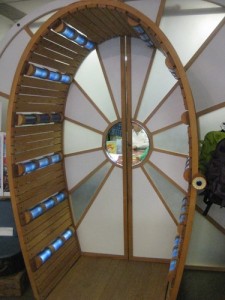 Which take place through the cafe’s magical spaceship doors…
Which take place through the cafe’s magical spaceship doors…
And we got to walk through those amazing sliding doors today because we were there for the launch of Joyce Grant‘s picture book Gabby, illustrated by Jan Dolby. (Joyce, a longtime literacy advocate, contributed a wonderful post to 49th Shelf this week for Family Literacy Day with tips for raising a reader.)
 Gabby is a fabulous book about a funny little girl who must deal with the consequences when she drops her book on the floor and all its letters fall out upon impact. When she starts picking up the letters now scattered all around her room, she is amazed to discover that the letters, when assembled in a precise manner, start taking on a life of their own. With the C, A and a T, Gabby makes a cat, but then it needs feeding, and trouble starts brewing when the next letters she picks up happen to spell “bird”.
Gabby is a fabulous book about a funny little girl who must deal with the consequences when she drops her book on the floor and all its letters fall out upon impact. When she starts picking up the letters now scattered all around her room, she is amazed to discover that the letters, when assembled in a precise manner, start taking on a life of their own. With the C, A and a T, Gabby makes a cat, but then it needs feeding, and trouble starts brewing when the next letters she picks up happen to spell “bird”.
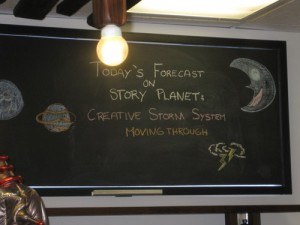 It’s a perfect book for Harriet, who is just beginning to understand how letters get together to make words. (Her partiality to the letter H, however, means that she’s not really bothered by the other 25 in the alphabet. Perhaps this book will help her get over that?) How letters with their individual sounds each have their own particular powers. Older readers will delight in guessing which words Gabby’s errant letters spell, as attested to by these kids’ reaction when Joyce was reading to us. The illustrations by Dolby are bright and fun, and subsequent readings reveal all kinds of hidden surprises.
It’s a perfect book for Harriet, who is just beginning to understand how letters get together to make words. (Her partiality to the letter H, however, means that she’s not really bothered by the other 25 in the alphabet. Perhaps this book will help her get over that?) How letters with their individual sounds each have their own particular powers. Older readers will delight in guessing which words Gabby’s errant letters spell, as attested to by these kids’ reaction when Joyce was reading to us. The illustrations by Dolby are bright and fun, and subsequent readings reveal all kinds of hidden surprises.
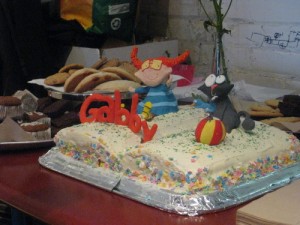 Though we in our family have a tendency to like any place where the cake is particularly abundant, we had an especially wonderful time today at the Gabby book launch. We were happy to pick up a copy of the book and have it signed by author and illustrator (who kindly noted with her autograph that H is indeed for Harriet!). And a book launch at such an extraordinary venue? It isn’t every day when you get the privilege of walking through a pair of sliding spaceship doors.
Though we in our family have a tendency to like any place where the cake is particularly abundant, we had an especially wonderful time today at the Gabby book launch. We were happy to pick up a copy of the book and have it signed by author and illustrator (who kindly noted with her autograph that H is indeed for Harriet!). And a book launch at such an extraordinary venue? It isn’t every day when you get the privilege of walking through a pair of sliding spaceship doors.
Isn’t reading wonderful?
January 23, 2013
Mini Reviews: Crusoe's Daughter & Stupid Boys Are Good to Relax With
 Jane Gardam always catches me off-guard, one of those authors who operates without real precedent and so whenever I pick up one of her books, it’s never what I’m expecting. I read Old Filth about two years ago, and found it incredibly bizarre–so traditional its Englishness and its subject matter, but its treatment was a bit like a fun-house mirror. I’ve made more sense of what Gardam is up to since reading this wonderful essay on Crusoe’s Daughter, which posits that Gardam “has, more successfully than most novelists, navigated the narrow stream between the stingy shores of modernism and the grand cliffs of the nineteenth century novel.”
Jane Gardam always catches me off-guard, one of those authors who operates without real precedent and so whenever I pick up one of her books, it’s never what I’m expecting. I read Old Filth about two years ago, and found it incredibly bizarre–so traditional its Englishness and its subject matter, but its treatment was a bit like a fun-house mirror. I’ve made more sense of what Gardam is up to since reading this wonderful essay on Crusoe’s Daughter, which posits that Gardam “has, more successfully than most novelists, navigated the narrow stream between the stingy shores of modernism and the grand cliffs of the nineteenth century novel.”
I bought Crusoe’s Daughter (though was disappointed not to receive this edition, whose cover I adore) after Martin Levin noted it as one of his top reads of 2012. I wish to better understand Gardam and her work because it intrigues me so, and also because her admirers tend to be really brilliant readers. It’s the story of Polly Flint, the daughter of a sailor who is sent to live in a yellow house by the sea with two eccentric aunts. The first passage in the book I underlined was a description of a view of trees from a train carriage: “The light showing through them made them look like loops of knitting pulled off the needles.” Oh, can Jane Gardam ever write. And then the line appears again, inconspicuously, closer to the end of the book. There is real method in the construction of this book, which reads as old-fashioned from a distance. Crusoe’s Daughter is actually a novel about novels, or one in particular. In her isolation in that strange house beside the sea, Polly finds escape and company in Robinson Crusoe, whose character’s own isolation she identifies with: “He didn’t go mad. He was brave. He was wonderful. He was like women have to be almost always, on an island. Stuck. Imprisoned. The only way to survive is to say it’s God’s will.”
There was so much going on in this book that I didn’t wholly understand or appreciate, and I’ve never read Robinson Crusoe which probably means I missed even more than I’m aware of. But I was still captivated by the oddness of Gardam’s narrative, by the oddness of Polly herself (who does go mad but only for a little while. She eventually finds salvation teaching Robinson Crusoe and English Literature at a boy’s school). I’m not wholly converted to Jane Gardam yet, but this novel was as such that I’m not going to stop reading her until she finally takes.
**
 I don’t know that I’ve ever been as stupid than the year I was twenty-one, when I came across Susan Swan’s Stupid Boys Are Good to Relax With while shelving books at the university library. I was drawn to the title immediately, of course, as stupid boys were a habit of mine at the time, not just because I was stupid myself (though this was part of the reason) but also because I hadn’t realized I could do any better. Perhaps I thought the title might justify so many of my life choices at the time? But I was so stupid the year I was twenty-one that I didn’t even know how to read a short story collection. I think I was too young to appreciate what Swan was up, and I don’t think I got very far with the book at all.
I don’t know that I’ve ever been as stupid than the year I was twenty-one, when I came across Susan Swan’s Stupid Boys Are Good to Relax With while shelving books at the university library. I was drawn to the title immediately, of course, as stupid boys were a habit of mine at the time, not just because I was stupid myself (though this was part of the reason) but also because I hadn’t realized I could do any better. Perhaps I thought the title might justify so many of my life choices at the time? But I was so stupid the year I was twenty-one that I didn’t even know how to read a short story collection. I think I was too young to appreciate what Swan was up, and I don’t think I got very far with the book at all.
The best thing about re-encountering a book is that it can be a testament to how far one has come. I would love for this momentum to continue, for my intelligence to be increased by the time I am 45 to the same extent it has improved in the last 12 years. Though that might just a peculiarity of one’s twenties; is there any other learning curve so great? Yes, my taste in men has come a long, long way, but I am also such a better reader now.
Stupid Boys Are Good to Relax With is remarkable for being a book published in 1996 with a laptop computer on its back-cover, with a whole section of the book called “Cyber Tales”, written as a conversation on the internet. In 1996, I wasn’t as stupid as I was when I was 21, but I don’t think I’d ever used the internet. How amazingly forward thinking was Stupid Boys…, which walks a very fine line of being very much of its time but not being dated. I was trying to explain the difference between the two, and I think it comes down to Swan having been aware of the use of technology in her work, and intending it to mean something other than just “modern” (which it most definitely wouldn’t be just a few short years along).
Stupid Boys… is a collection of stories about the way women construct their lives and identities of men undeserving of such an honour (and who are often even unaware they’re so being honoured). Using traditionally structured stories (including some narrated by the famous Mary Beatrice Bradford), and more unconventional tales peopled by characters from classical literature and pop-culture, Swan writes about the compromises women make, and the pleasure and pain of such choices. It’s also a surprisingly remarkable complement to Caitlin Moran’s How to Be a Woman, which is the book I read immediately afterwards.
January 23, 2013
Do you know how to be a woman now?
 ‘”No–I’m talking about the common attitudinal habit in women that we’re kind of…failing if we’re not a bit neurotic. That we’re somehow boorish, complacent, and unfeminine if we’re content.
‘”No–I’m talking about the common attitudinal habit in women that we’re kind of…failing if we’re not a bit neurotic. That we’re somehow boorish, complacent, and unfeminine if we’re content.
The way women feel that they are not so much well-meaning human beings doing the best they can but, instead, an endless list of problems (fat, hairy, unfashionable, spotty, smelly, tired, unsexy, and with a dodgy pelvic floor, to boot) to be solved. And that, with the application of a great deal of time and money–I mean a great deal of itme and money. Have you seen how much laser hair removal is?–we might, one day, 20 years into the future, finally be able to put our feet up and say, “For nine minutes today, I almost nailed it.”
Before, of course, starting up the whole grim, remorseless, thankless schedule the next day, all over again.
So if I was asked, “Do you know how to be a woman now?” my answer would be, “Kind of yes, really, to be honest.” ‘
–Caitlin Moran, How To Be A Woman
